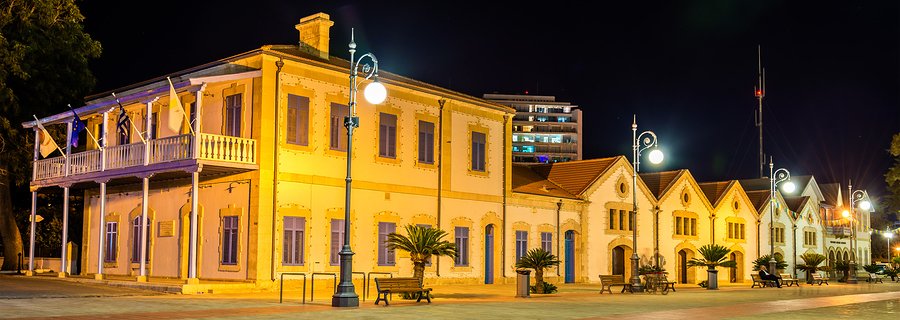If you’re the type who thinks that dark stretches of unlit roads are the stuff horror movies are made of, you’re hardly alone. Lots of us feel much safer and more secure in places that are well lit after the sun goes down. And while that artificial lighting may give us a better view of our surroundings and willingness to go out more often at night, it also could be doing us harm. According to new research, nighttime lights might be contributing to the development of breast cancer.
The study, which took place at Harvard University Medical School in Boston, Massachusetts, found that women residing in areas with plentiful outdoor lighting at night may have a higher risk of breast cancer.1 James, Peter; at al. “Outdoor Light at Night and Breast Cancer Incidence in the Nurses’ Health Study II.” Environmental Health Perspectives. 17 August 2017. Accessed 27 August 2017. http://ehp.niehs.nih.gov/ehp935/#tab1. The results were based on an analysis of data on 109,672 women participating in the Nurses’ Health Study between 1989 and 2013.
Each subject’s home was geocoded to obtain its precise coordinates on a map. Satellite images were then examined for the surrounding neighborhood to determine the average level of nighttime light. These calculations were regularly updated throughout the 14 years of follow up to ensure that the lighting appraisals remained accurate. (You have to admit, it’s really amazing the kinds of studies that can be done.)
By the end of the study period in 2013, there were 3,549 new cases of breast cancer among the volunteers. After comparing the breast cancer diagnoses to the levels of outdoor lighting in the neighborhood, the investigators discovered that there was a greater risk in better-lit neighborhoods. This effect increased proportionately, so the more lighting there was, the higher the likelihood of breast cancer diagnoses. In fact, in the most highly lit areas, breast cancer risk rose 14 percent above the areas with the least lighting.
How could artificial lighting, which seems relatively harmless in the grand scheme of things, possibly be associated with breast cancer diagnoses? It turns out that it is actually influenced by the effect artificial light has on our circadian rhythms, which is how the natural cycle of light and dark helps to set our internal clocks. Too much light at night can delay the physiological processes that typically begin in our bodies after the sun sets that are responsible for making us sleepy.
What normally occurs is a considerable increase in melatonin production. Melatonin is a hormone that is released in total darkness and is known to promote better quality of sleep, immune function, mood boosting, and it offers antioxidant capabilities. Plus, melatonin may be a source of protection against cancer for us, as a 2015 study at the University of Copenhagen in Denmark showed that it provided tumor-fighting benefits.2 Vinther, Anna Gry and Claesson, Mogens H. “The Influence of Melatonin on Immune System and Cancer.” International Journal of Cancer and Clinical Research. September 2015. Accessed 28 August 2017. http://www.clinmedjournals.org/articles/ijccr/international-journal-of-cancer-and-clinical-research-ijccr-2-024.pdf.
When it comes to lighting, the shorter the wavelength, the more it disrupts melatonin production. Blue light is among the shortest wavelengths, and that is what is emitted by not only light bulbs, but also televisions, computer screens, tablets, and cell phones. So it is much more than just the outdoor lighting in our neighborhood that we have to worry about.
Therefore, the current study is flawed somewhat by the limitations of assessing risk based only on the outdoor lighting near a woman’s home. That is certainly a factor, but only one of many types of nighttime lights for which exposure is possible. But if anything, that may only serve to make our overall breast cancer risk from artificial lighting even higher than the 14 percent found by the researchers, since it’s entirely possible to live in an area not flooded with lights but to receive exposure from lots of indoor lighting, hours of screen time after dark, or even working frequent night shifts.
So what’s a woman to do to protect herself? First of all, keep it in perspective that nighttime light exposure is only one potential risk factor for breast cancer. Other risk factors include obesity and lack of physical activity. So, if you eat a nutritious diet and exercise regularly, you should lower your chances of developing this disease considerably. And as far as artificial lighting is concerned, try to cut back where you can. You’re obviously not going to sit in the dark, but all of your lights don’t need to be on all evening. Use blackout curtains on your windows. Opt for clocks that use red lighting rather than blue lighting. Also, screen time should end long before bed if there’s even a slight chance that it can increase your breast cancer risk. And there’s always the option of taking a timed release melatonin supplement before bed.
References
| ↑1 | James, Peter; at al. “Outdoor Light at Night and Breast Cancer Incidence in the Nurses’ Health Study II.” Environmental Health Perspectives. 17 August 2017. Accessed 27 August 2017. http://ehp.niehs.nih.gov/ehp935/#tab1. |
|---|---|
| ↑2 | Vinther, Anna Gry and Claesson, Mogens H. “The Influence of Melatonin on Immune System and Cancer.” International Journal of Cancer and Clinical Research. September 2015. Accessed 28 August 2017. http://www.clinmedjournals.org/articles/ijccr/international-journal-of-cancer-and-clinical-research-ijccr-2-024.pdf. |












There are also orange glasses
There are also orange glasses UVEX Safety Eyewear by Honeywell. Orange blocks out blue light and they are available for wearing over regular glasses. Sold on Amazon for less than $10. I have no ionterest in telling you this except that I bought a pair and wear them and they do block blue light.